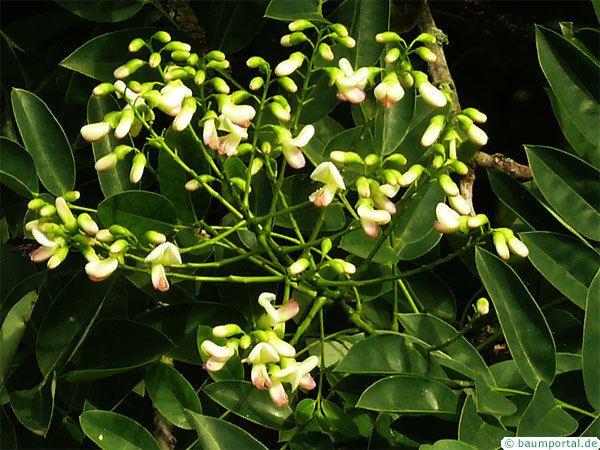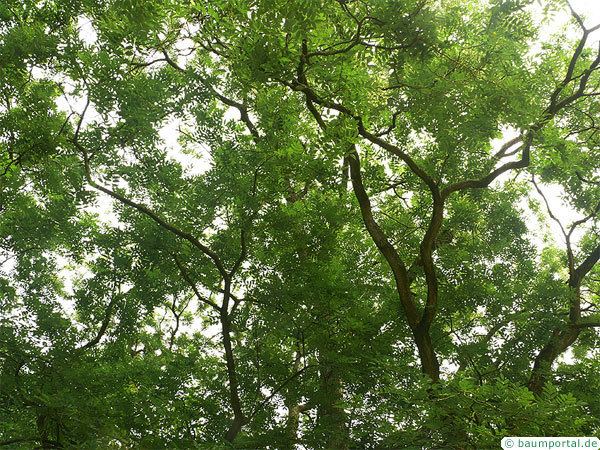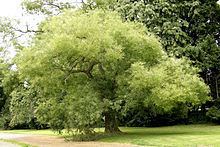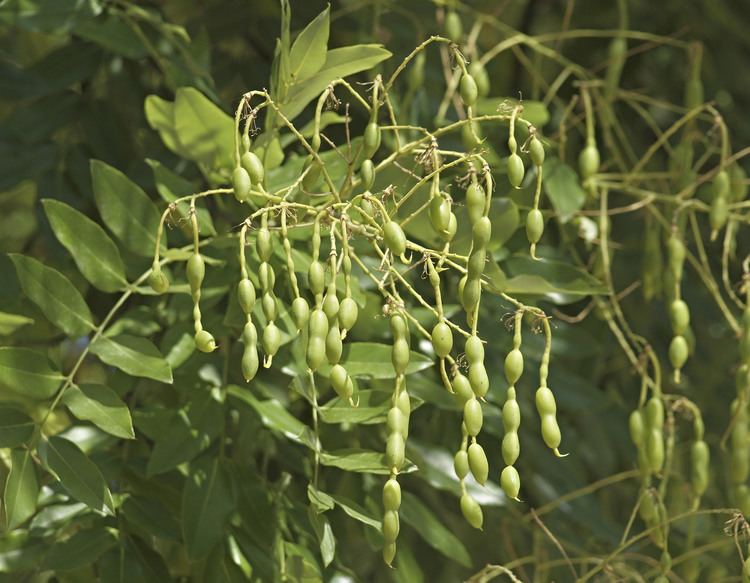Tribe Sophoreae Rank Species | Genus Styphnolobium Higher classification Styphnolobium | |
 | ||
Similar | ||
Styphnolobium japonicum (L.) Schott, the Japanese pagoda tree (Chinese scholar tree, pagoda tree; syn. Sophora japonica) is a species of tree in the subfamily Faboideae of the pea family Fabaceae.
Contents
- Distribution
- Gardening
- Traditional medicine
- Construction uses
- Medicinal properties
- Chemistry
- Chinese etymology
- References

It was formerly included within a broader interpretation of the genus Sophora. The species of Styphnolobium differ from Sophora in lacking the ability to form symbioses with rhizobia (nitrogen fixing bacteria) on their roots. It also differs from the related genus Calia (mescalbeans) in having deciduous leaves and flowers in axillary, not terminal, racemes. The leaves are alternate, pinnate, with 9-21 leaflets, and the flowers in pendulous racemes similar to those of the Black locust.

Distribution

Styphnolobium japonicum is native to China; despite the name, it was introduced in Japan. It is a popular ornamental tree in Europe, North America and South Africa, grown for its white flowers, borne in late summer after most other flowering trees have long finished flowering. It grows into a lofty tree 10–20 m tall with an equal spread, and produces a fine, dark brown timber.
Gardening

The Guilty Chinese Scholartree was a historic pagoda tree in Beijing, from which the last emperor of the Ming dynasty, Chongzhen, hanged himself.
Traditional medicine

S. japonicum (Chinese: 槐; pinyin: huái; formerly Sophora japonica) is one of the 50 fundamental herbs used in traditional Chinese medicine.
Construction uses

Used to make the strong, springy curved "enju wood" handle used on the traditional Japanese woodworking adze, called the chouna.
Medicinal properties
It has abortifacient, antibacterial, anticholesterolemic, antiinflammatory, antispasmodic, diuretic, emetic, emollient, febrifuge, hypotensive, purgative, styptic, and tonic properties.
Chemistry
S. japonicum contains the isoflavone glycoside sophoricoside.
Chinese etymology

The Chinese name for the tree (槐) is composed of the word 木 ("wood") and 鬼 ("demon"). In folklore, it is said that a cowherder once built a home out of this species of tree, and within a month his entire family was suddenly found dead, with no signs of foul play. It was therefore believed that demons are drawn to this tree and it is therefore not appropriate to use its wood to build homes. In addition, in the wild, other species of tree rarely grow near it.
